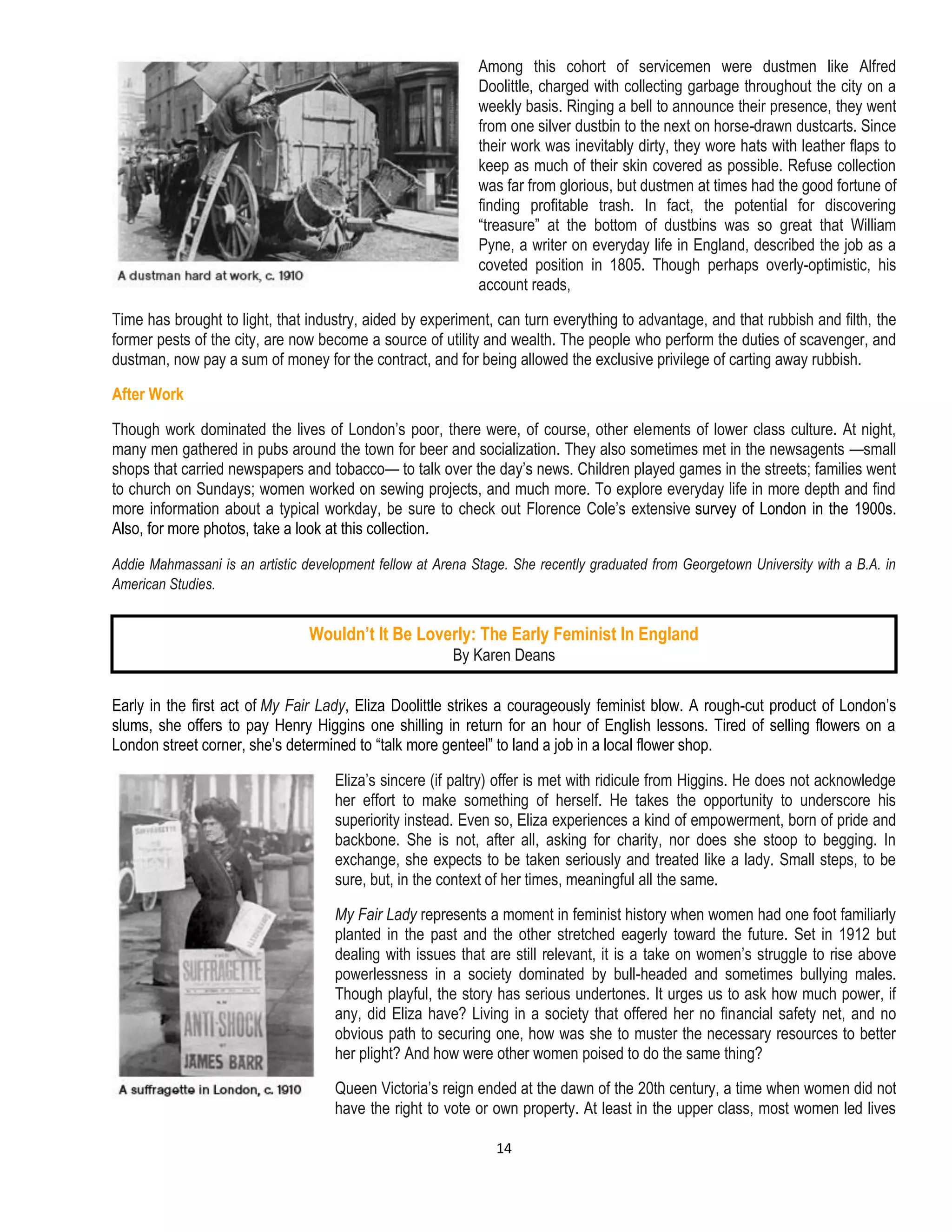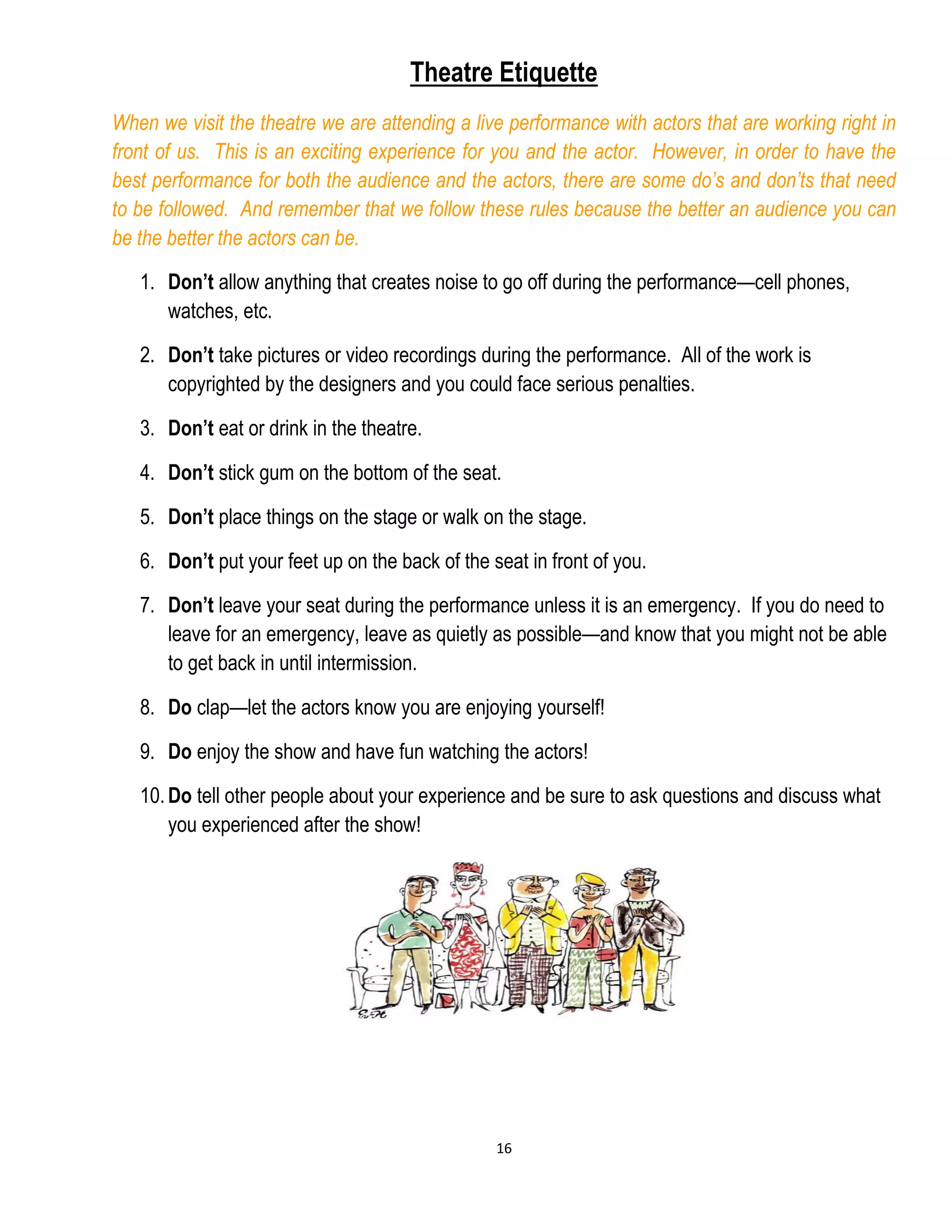This document provides information about the musical My Fair Lady, including a 3 paragraph plot synopsis, descriptions of the main characters, and background on the playwrights Lerner and Loewe. It discusses how Lerner and Loewe met in 1942 and went on to collaborate on several highly successful Broadway musicals including Brigadoon, Paint Your Wagon, My Fair Lady, Camelot, and Gigi. It also provides context about the time period the musical is set in and phonetic concepts central to the story.
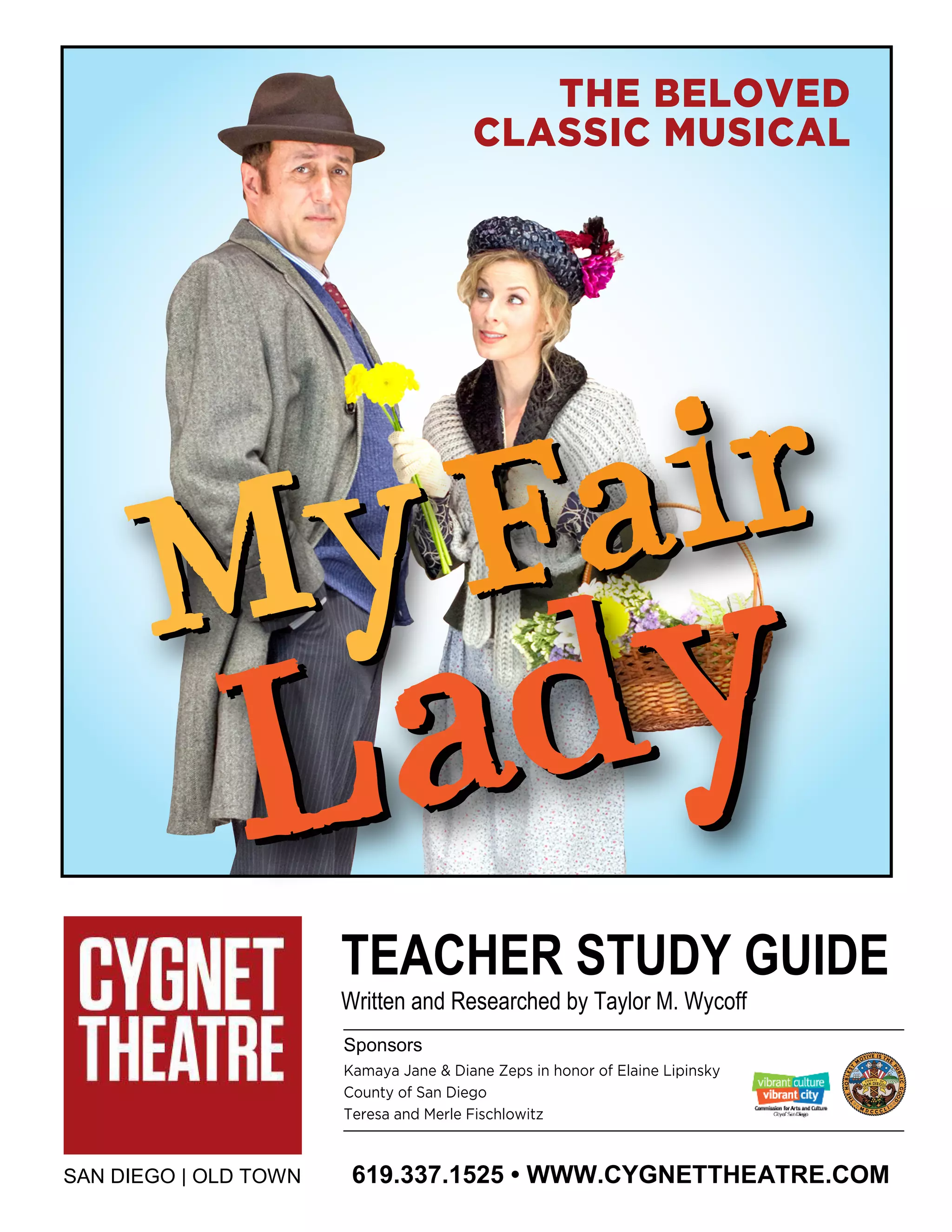

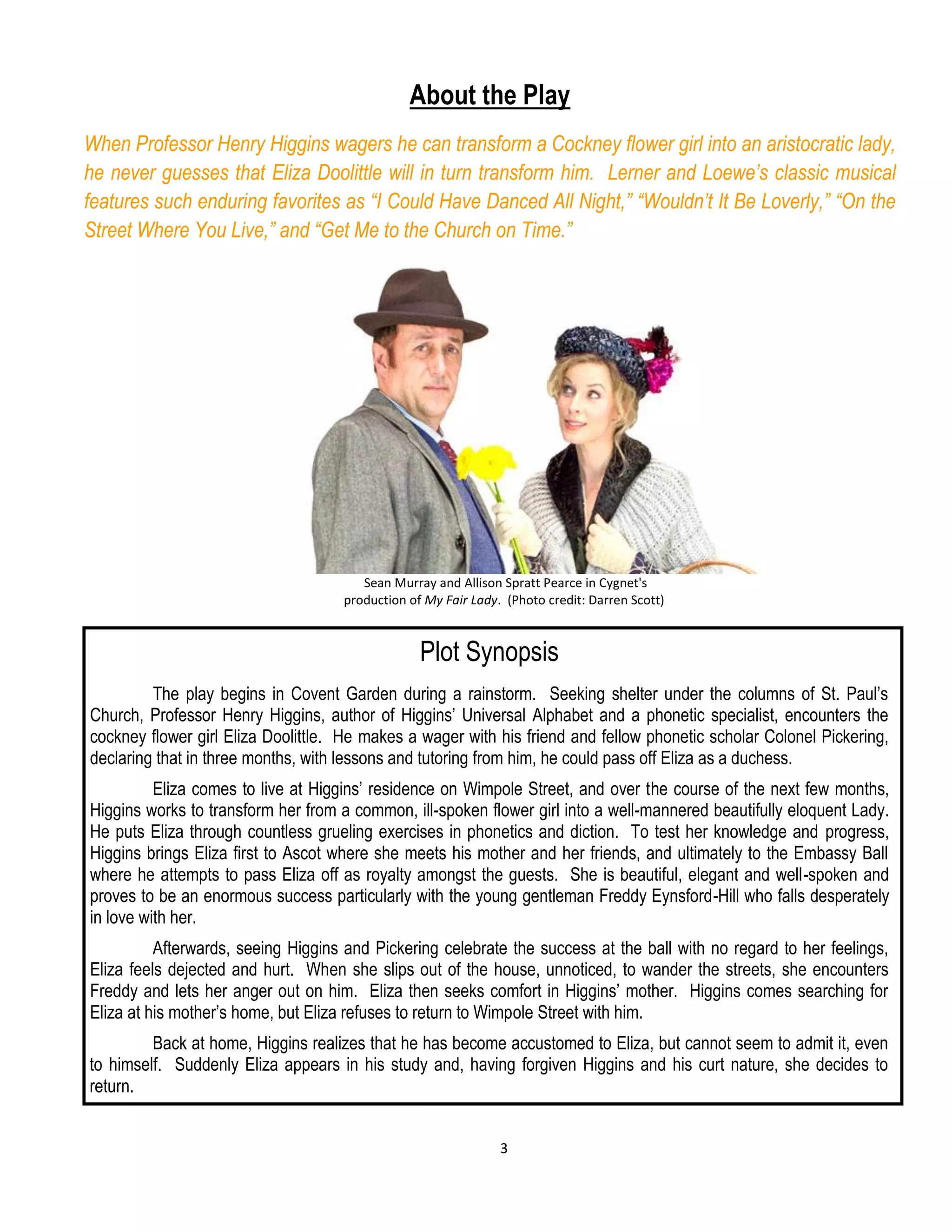
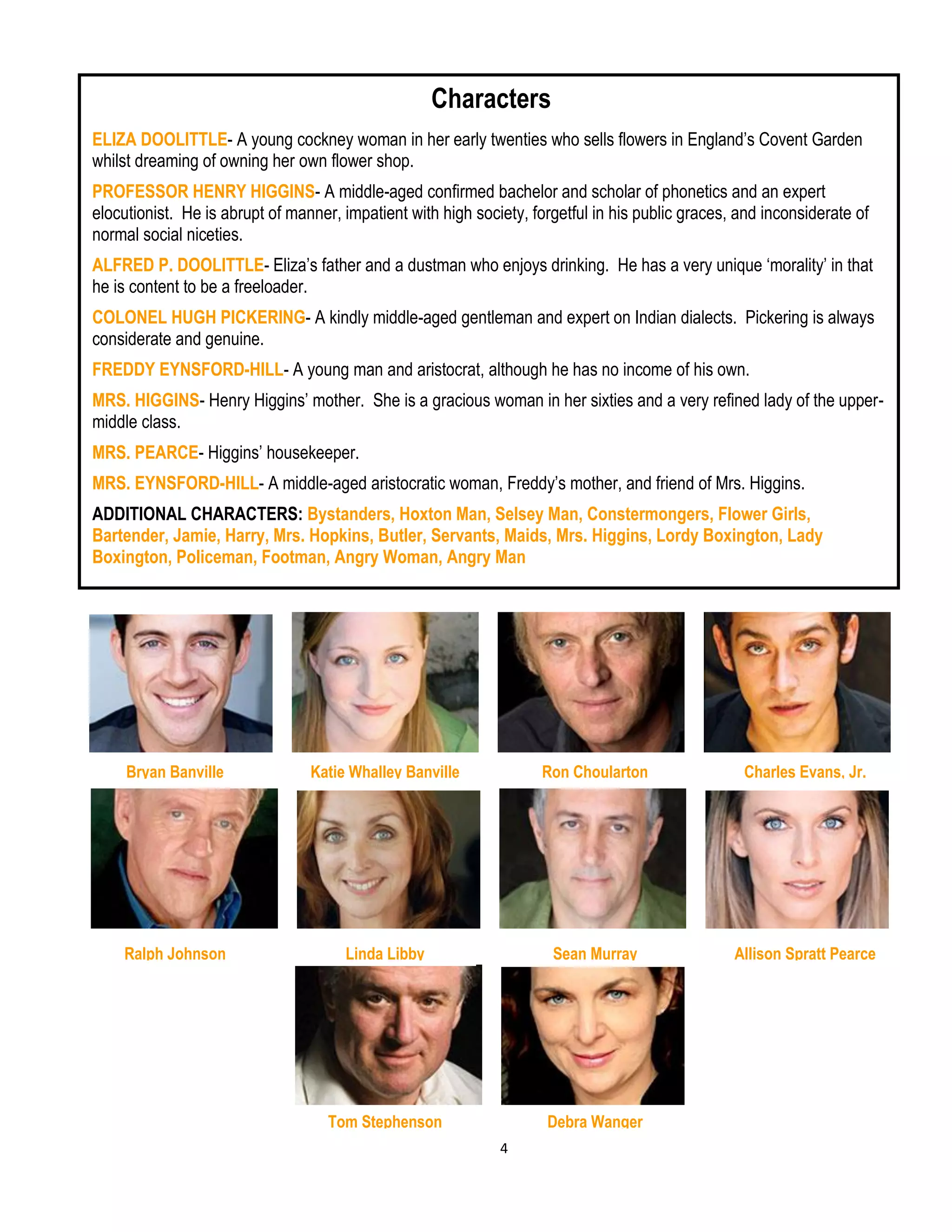
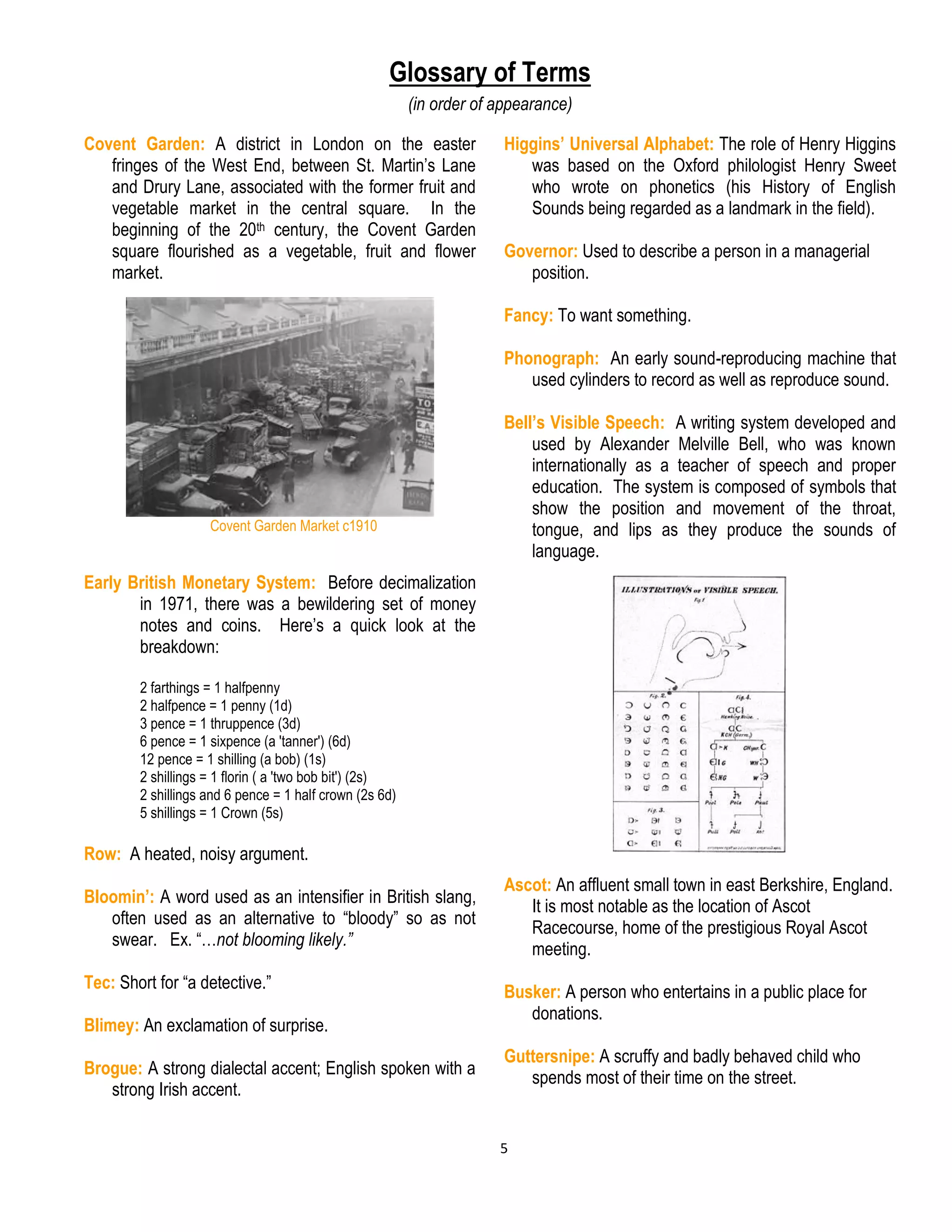
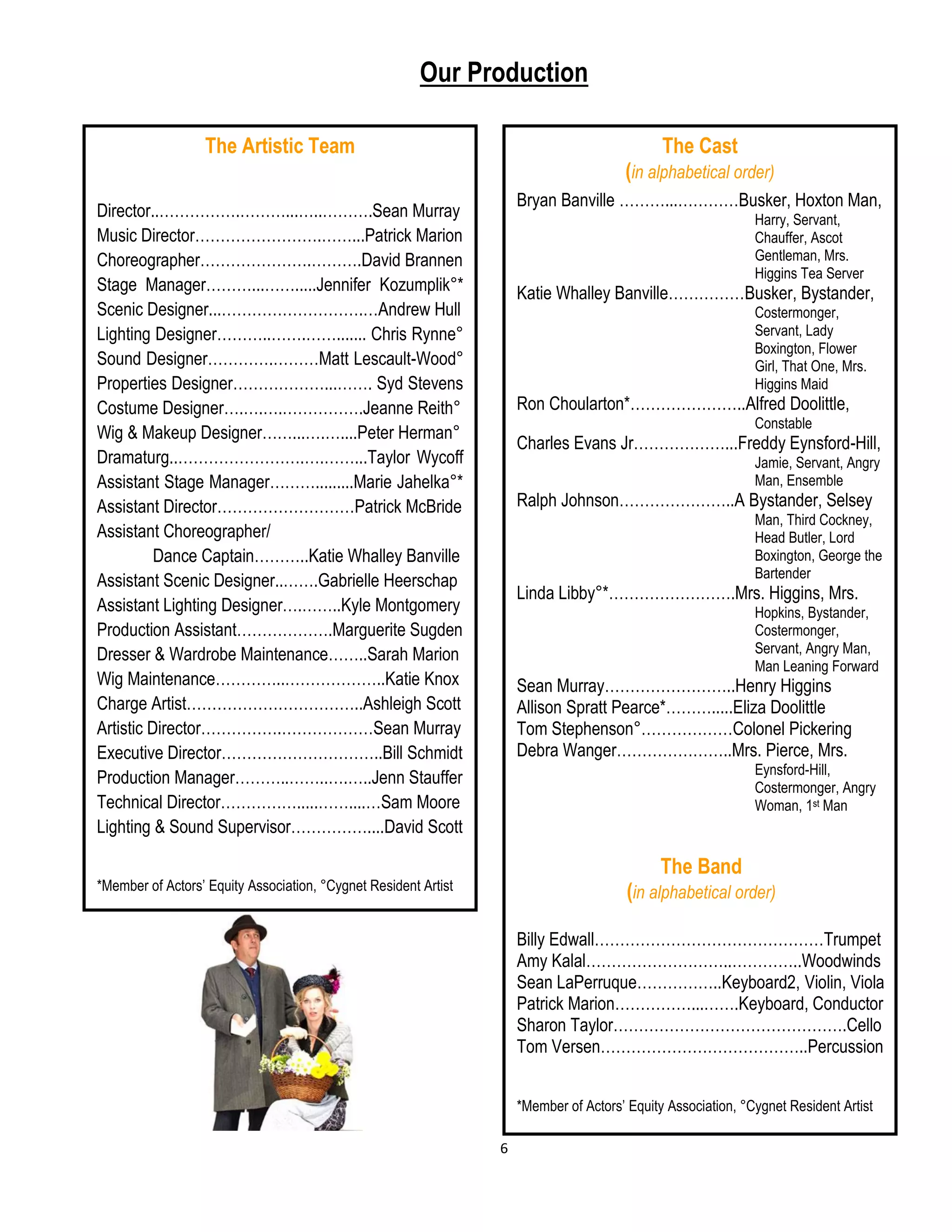

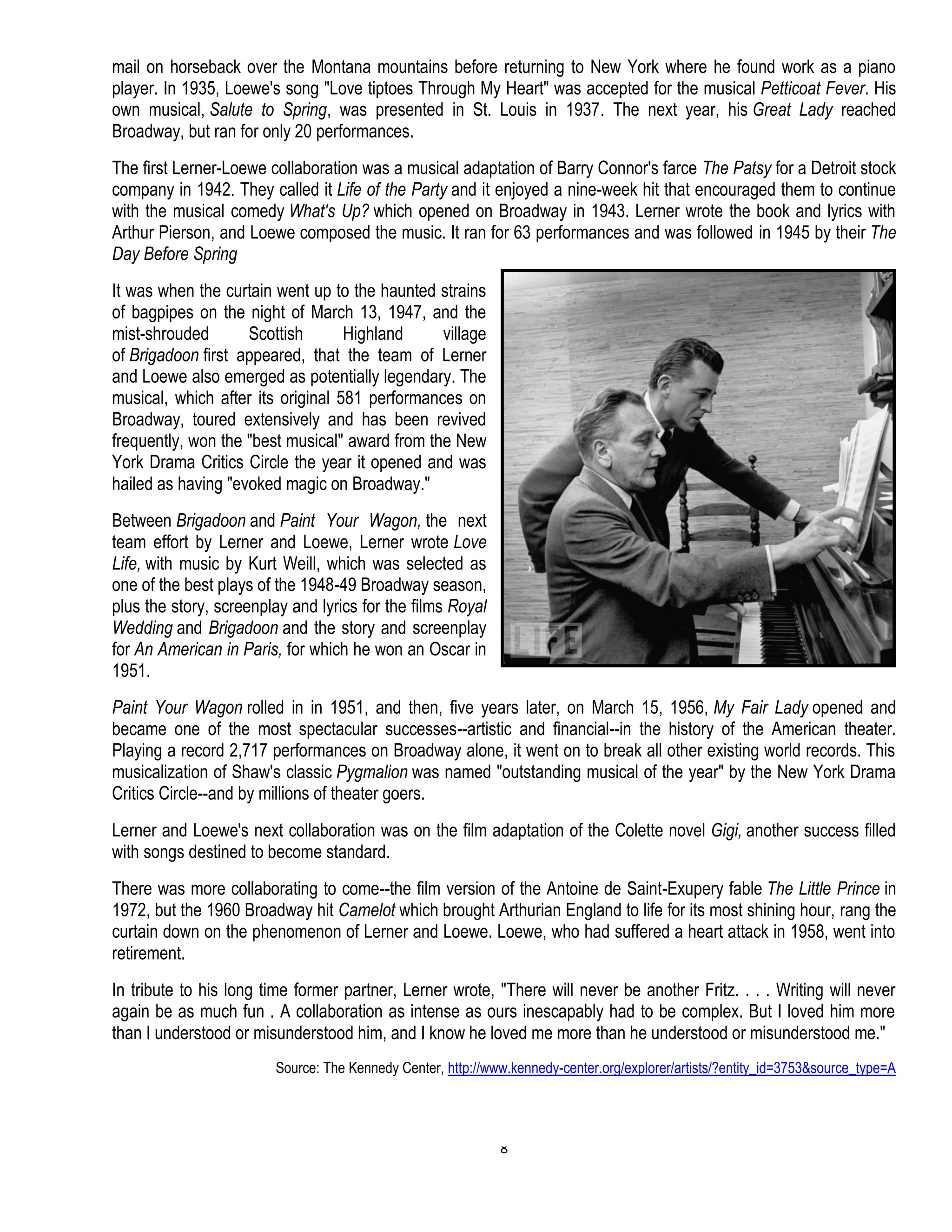
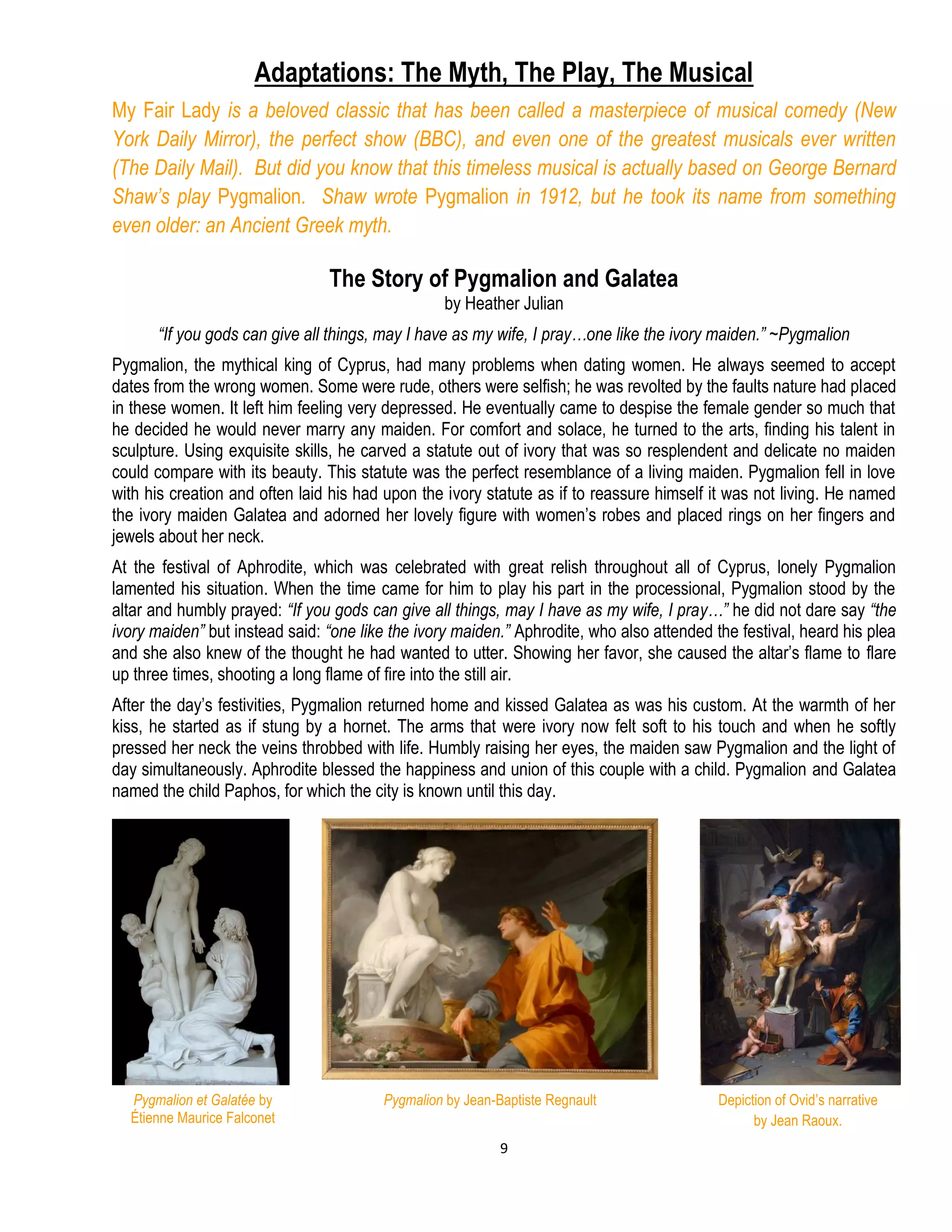
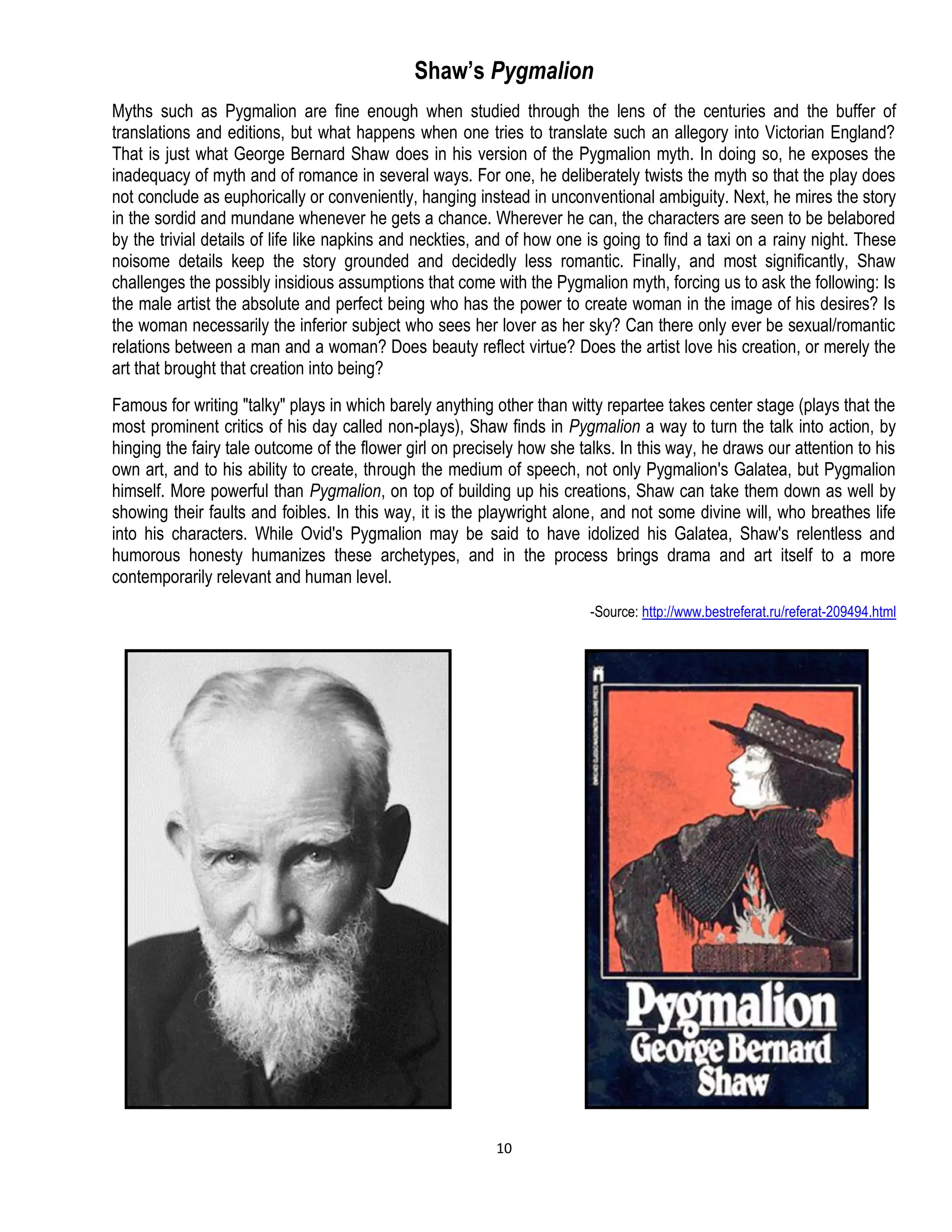
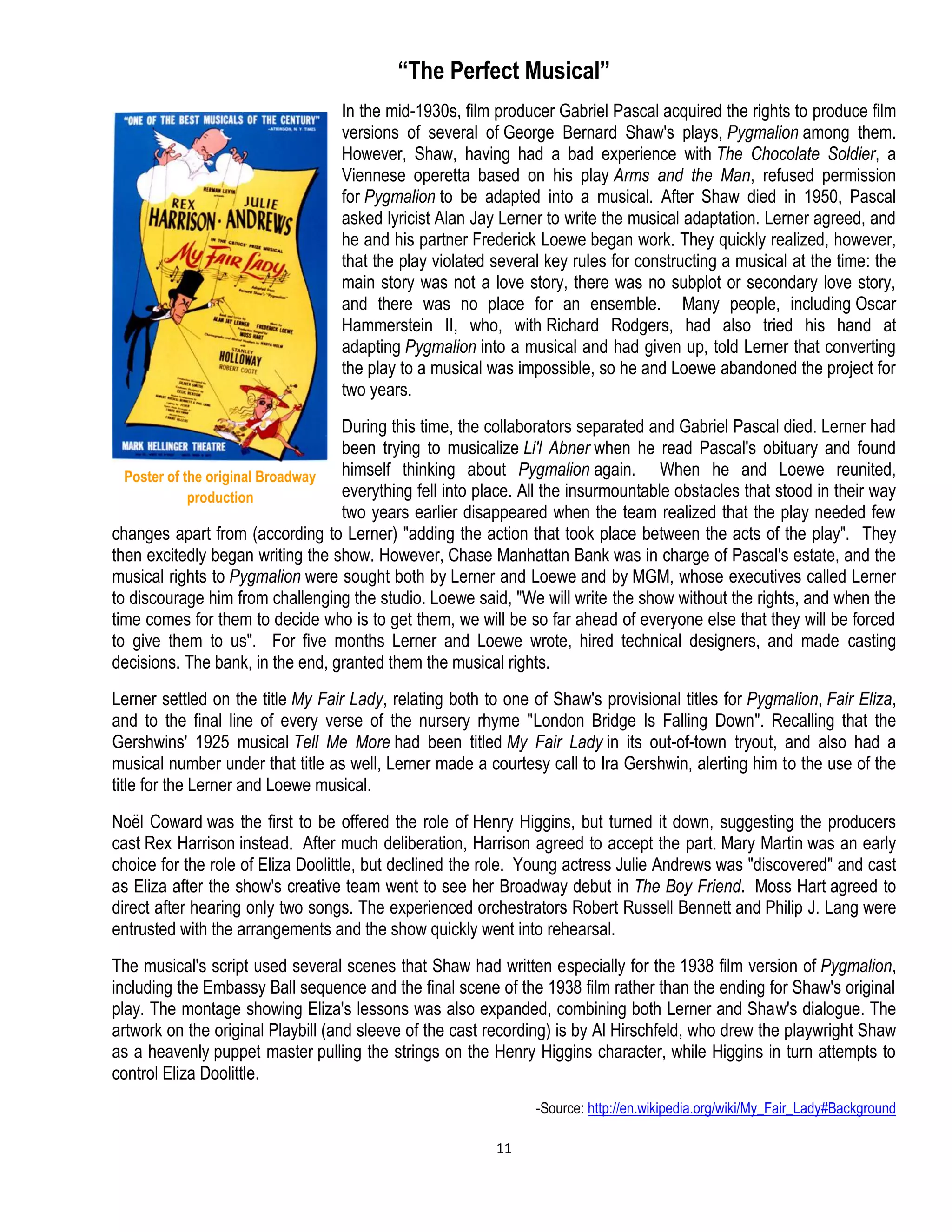
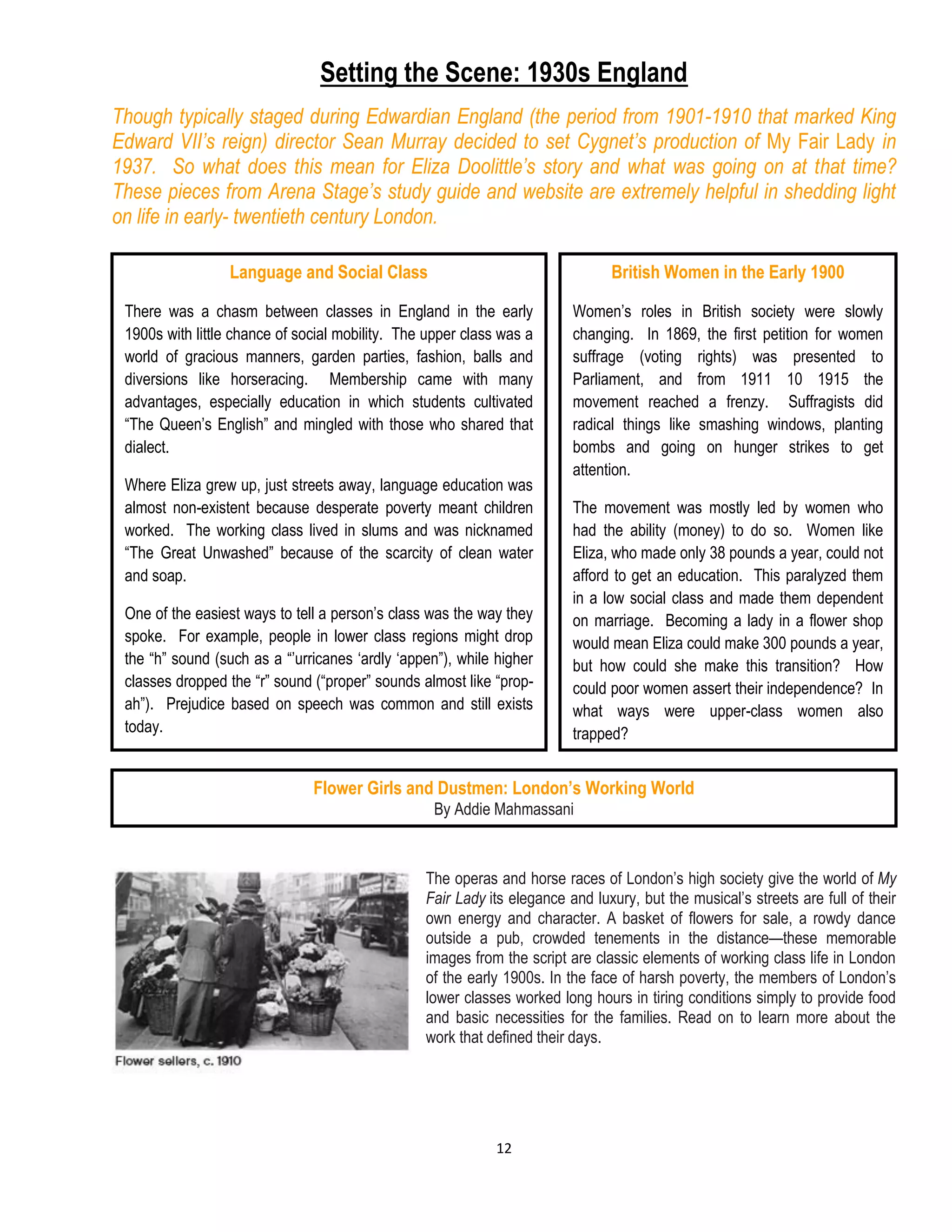
![13
Shops
A common way to make a living was to set up shop on one of London’s busy streets.
Those lucky enough to own their own shops were on the highest social level of the
working world. In an era before supermarkets, small shops that specialized in one or two
specific goods were the order of the day. From the baker to the butcher, shop owners
often lived in flats above their shops and employed their family members, making the line
between home and work difficult to discern. A typical workday was also infused with a
good deal of gossip and small talk, as socializing was an expected element of the
shopping routine. Gathering household items was considered women’s work, but mothers
sometimes sent their children to run quick errands.
With the pawnbroker, the ironmonger, the cobbler, and countless others in one space,
there was no shortage of variety in a London street market. The sights and sounds on a
typical day were surely exciting, if not slightly chaotic. Making for a long day of buying and
selling, shops stayed open until about 8:00 PM. Very few items were pre-packaged, so a
flurry of weights and scales could be heard clanking and sliding at every corner. Bakers
walked around their shops in white caps and aprons while butchers swept sawdust
around the floor. Glass bottles of colorful liquid decorated the display windows of chemist
shops where all sorts of medicines could be found. Meanwhile the corn-chandlers, who
sold animal food, ladled various feeds into paper bags according to their customers’ specifications.
On a much lower social level than shop owners were merchants who did not have permanent workplaces. Peddlers added to
the noise of the town with street cries, which they sang to draw customers in. In simple rhymes bellowed at the top of their
lungs, these men and women offered everything from live goldfish, to fruits, to knives.
Flower Girls
Joining the ranks of London’s hawkers were the flower girls, who moved up and down the streets
with heavy cane baskets full of violets, lavender, and carnations. Though old gypsy women
sometimes sold flowers, most flower girls were quite young, ranging in age from six to twenty
years old. These girls bought their flowers at large open-air markets like Covent Garden and then
arranged them into small bouquets to sell at higher prices.
In an 1861 report on the London Poor, author Henry Mayhew described
“two classes of flower girls.” According to his notes about the flower
sellers who took to the street later in the night, some women used this
profession as a pretense to meet men for “immoral purposes.” Their
activities led many Londoners to regard flower girls as licentious, a
negative perception that Eliza does her best to counter in My Fair
Ladywith her cries of, “I’m a good girl, I am!”
A “better class of flower-girls” certainly existed, many of them coming
from Eliza’s neighborhood, Lisson-Grove. With innocent intentions, these girls sold their flowers in the
West End, the suburbs, and other business hubs. The money they made often went right to their
parents. According to Mayhew, “They [were] generally very persevering, more especially the younger
children, who [ran] along, barefooted.”
Servicemen
Outside of the shops, the working class also included an array of servicemen. Traveling from house to house and street to
street, they delivered milk and coal, carried the mail, swept chimneys, and even offered knife and scissor sharpening services.](https://image.slidesharecdn.com/05b5ea56-7523-4e20-8811-02c3c39b196c-150709160518-lva1-app6891/75/Teacher-Study-Guide-My-Fair-Lady-13-2048.jpg)
